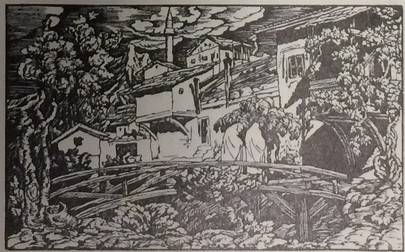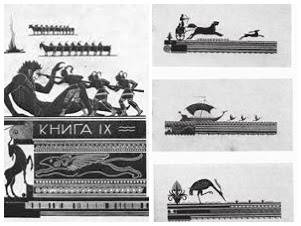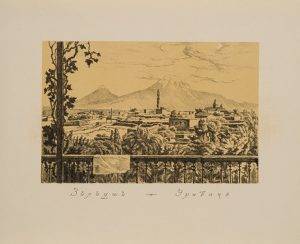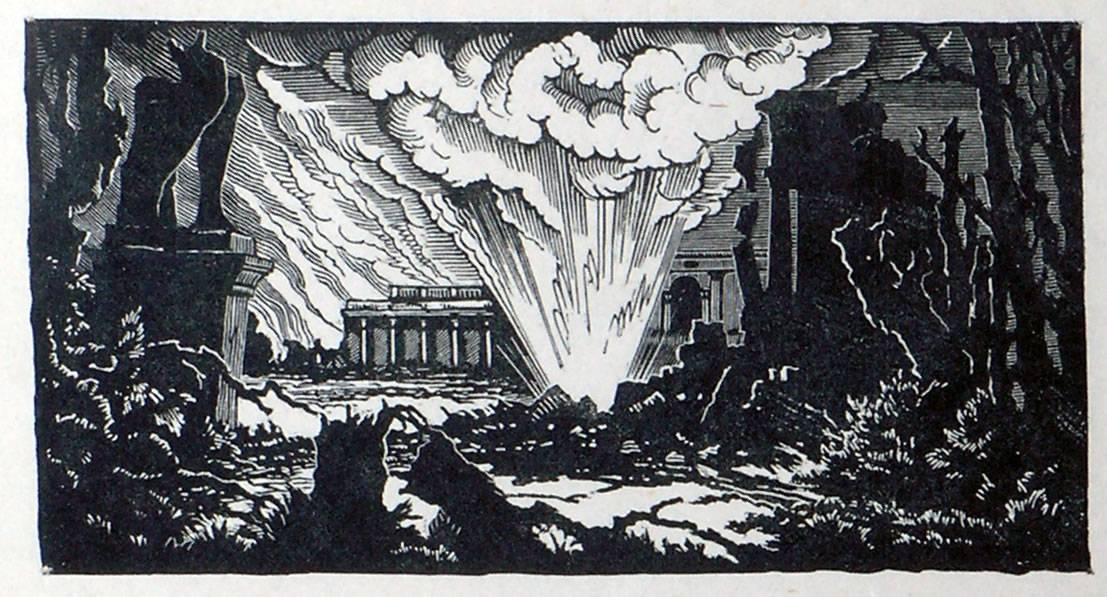Today gravure is often perceived as an old and forgotten type of art. Such associations, to some extent, may be conditioned by the fact that for a long time, till the invention of the photo, gravure has mostly done the role of photo, TV and movie. Due to it, we have got a lot of historical information, and because of its very ‘documentary’ nature, this type of art is associated with antiquity. However, with no intention of referring to gravure as a documentary material, we will consider it as a type of graphic art. Being so, it includes almost all the printing techniques: beginning with the classic gravure done on wood and metal, ending with printing and some ways formed in the result of development of informational technologies, such as laser printing.
Gravure has various techniques: xilogravura, mezzo tinto, eau-forte with its different types (au lavis, acquetinte, and so on), lithographie, chromolitographie, linogravure.
Let’s try to get acquainted with these techniques by observing the creative path of famous, Soviet artist Pavel Aleksandrovich Shilingovski (1881-1942). The great master of graphics is a representative of modern and neoclassical direction and has worked with a number of gravure techniques. He had a significant contribution in the establishment of the Graphic Faculty of Russian Fine Arts. Referring to Shilingovski’s creative path, we will notice that he has mainly worked with eau-forte technique.[1]
Among his early works are (1914) two masterpieces made with that technique:“Escape to Egypt”, and “Lot with His Daughters”. The complexity and attractiveness of this technique lie in the fact, that it is impossible even for the artist to predict the final result.

Later on, Shilingovski begins to work with xilogravura, lithographie, and linogravura techniques. In 1917 he created his first work on wood. His first xylographie [2] was called “Mountain Landscape with trees”. It still lacked experience and skillness, but in his very next work he surprised everyone by his capacity of using the new technique.

In 1920’s, exlibrises or booklets got great popularity in graphic arts. Their complexity and at the same time interest were connected to the possibility to create an impressive and clear composition on the little surface of the book for the gravure artists. Shilingovski did not stay behind too. Most of his booklets enter the golden fund of exlibri of the 20th century. Some of them are even connected to Armenia.

In particular, Shilingovski has two booklets designed for Artashes Karinyan [3]. Each of these works expresses the master’s subject of creative searches. The first booklet, with arch and ruins, is the testimony of Shilingovski’s interest in the architecture of the country. In the second case, the love towards the nature and everyday life of Armenia is clearly noticeable.
Shilingovski’s wide range of creative abilities can also be seen by his unique works with the books of old authors, particularly with the legendary “Odyssey”, in which the author has kept the old, greek tradition of drawing black images in ceramics. The master has devoted more than 50 gravures to this poem, which are considered to be one of the best works made in the books of 20th century.

There are many landscape images in Shilingovski’s “treasury” made by one of the most used types of printing graphics: lithographie. Here, “Pushkin’ places”, “New Armenia” rows stand out.

In the end, we cannot forget to refer to Shilingovski’s favourite city: Petersburg, to which his last creative row was devoted: “The Besieged City” (1941-1942), where he died from starving during the years of blockade ( Andrey Bartasheevich has written about the artist’s funeral in his diary).

[1] Օֆորտը մետաղի վրա փորագրելու ամենահայտնի եղանակներից մեկն է: [2] Քսիլոգրաֆիան կամ փայտափորագրությունը գրաֆիկական փորագրությունն է ծառի փայտի վրա: [3] Խորհրդային կուսակցական ու պետական գործիչ, գրականագետ, պատմաբան:References
Bibliography
https://pv-gallery.com/author/85833/Shillingovskiy-P-A4
https://archi.ru/events/7680
http://www.rusmuseum.ru/collections/engraving/?sphrase_id=163809
https://www.youtube.com/watch?v=cIvUWDjs28E
Author: Heghine Aleksanyan © All rights reserved.
Translator: Lianna Sargsyan








